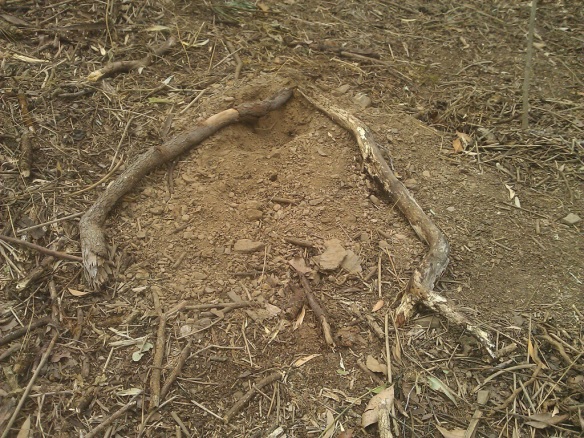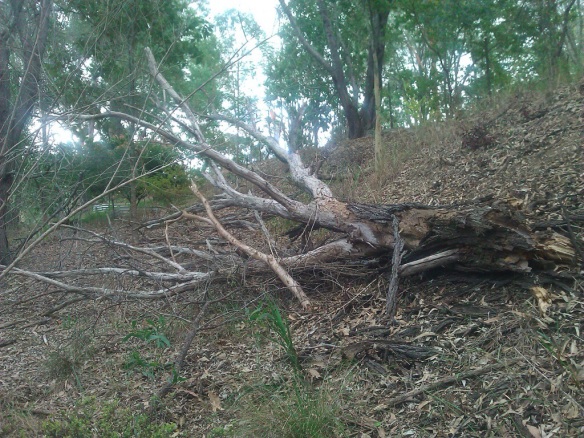A about four months ago, a possum appeared in the trees near our house. This is not unusual; possums are common, especially down at the chook pen at night, where they come to see what scraps have been left them. But this possum had lost his long bushy tail. Instead, he had a stump with a raw wound at the end and another just above. The stump was bare of fur and the possum looked thin and ragged. Rather unimaginatively we named him Stumpy. Since then, Stumpy has been appearing most nights. At dusk we might hear a thump on the roof as he emerges for the night and see him peering over the edge of the guttering, his eyes bright but fearful.
I called the vet one day as I was worried about the raw wound on his stump which was still open and sometimes bleeding, even a few weeks after we first saw him.
“Possums without tails don’t tend to do very well in the wild,” she told me.
It’s true that he obviously has trouble manoeuvring. He doesn’t have very good balance and, one night, fell quite spectacularly from the birdfeeder suspended from the back deck. He was fine, so I guess he’s pretty tough.
One afternoon as I was going out the back door, I heard a scraping noise above me. I went out into the garden so I could see up onto the roof above the door, and there was Stumpy crouched in the corner of the roof that overhangs the verandah and underneath the main roof that sits out over it. It had been very hot — 40 degrees some days — and I was worried about him up there under a hot tin roof. So I got onto the local Facebook page and asked if anyone knew where I could get a possum box. I soon had a solid box that my husband fixed to a tree near the shed. We wondered if Stumpy would find it so we put a banana on the lip to entice him.
We went away for a week the next day, but when we got back, my husband got out the ladder and climbed up to see if the box was occupied. Nope. No possum. He checked again a couple of days later, but still no possum. I’d been leaving fruit out as usual for Stumpy but it had been going uneaten, so we presumed that Stumpy had finally succumbed to the brutality of the bush, where it really is survival of the fittest. Finally my husband decided he may as well take the box down and return it to the person who had leant it to us. He climbed up and decided to take one last look before taking it down. He didn’t bother being cautious, just opened the top for a quick look, and there, lying on its back in the pile of dead leaves, was a possum.
“Well is it Stumpy?” I asked him when he called out to me.
“I don’t know, I didn’t look at his tail,” he replied. So I climbed up the ladder to look for myself and as I peered into the box, a rather startled and somewhat affronted possum looked back. Sure enough, there was just a bare stump; Stumpy had found his home. We put a piece of banana on the edge of the hole to see if he would take it. We looked away, looked back and it was gone.
Stumpy hasn’t been in his box when we’ve looked recently, but he still turns up most nights and takes the food left out for him. He has put on weight, his fur is lovely and thick, and his stump has healed and is also covered in fur. His only problem now is other possums with lovely long bushy tails moving in on his turf. We hear territorial noises on the roof. I’ve seen one take Stumpy’s food, and last week Stumpy turned up, obviously very hungry because he allowed me to hold a piece of banana while he held onto my fingers and ate it. Hopefully he’ll survive. We’ll keep an eye on him and keep leaving food out.










